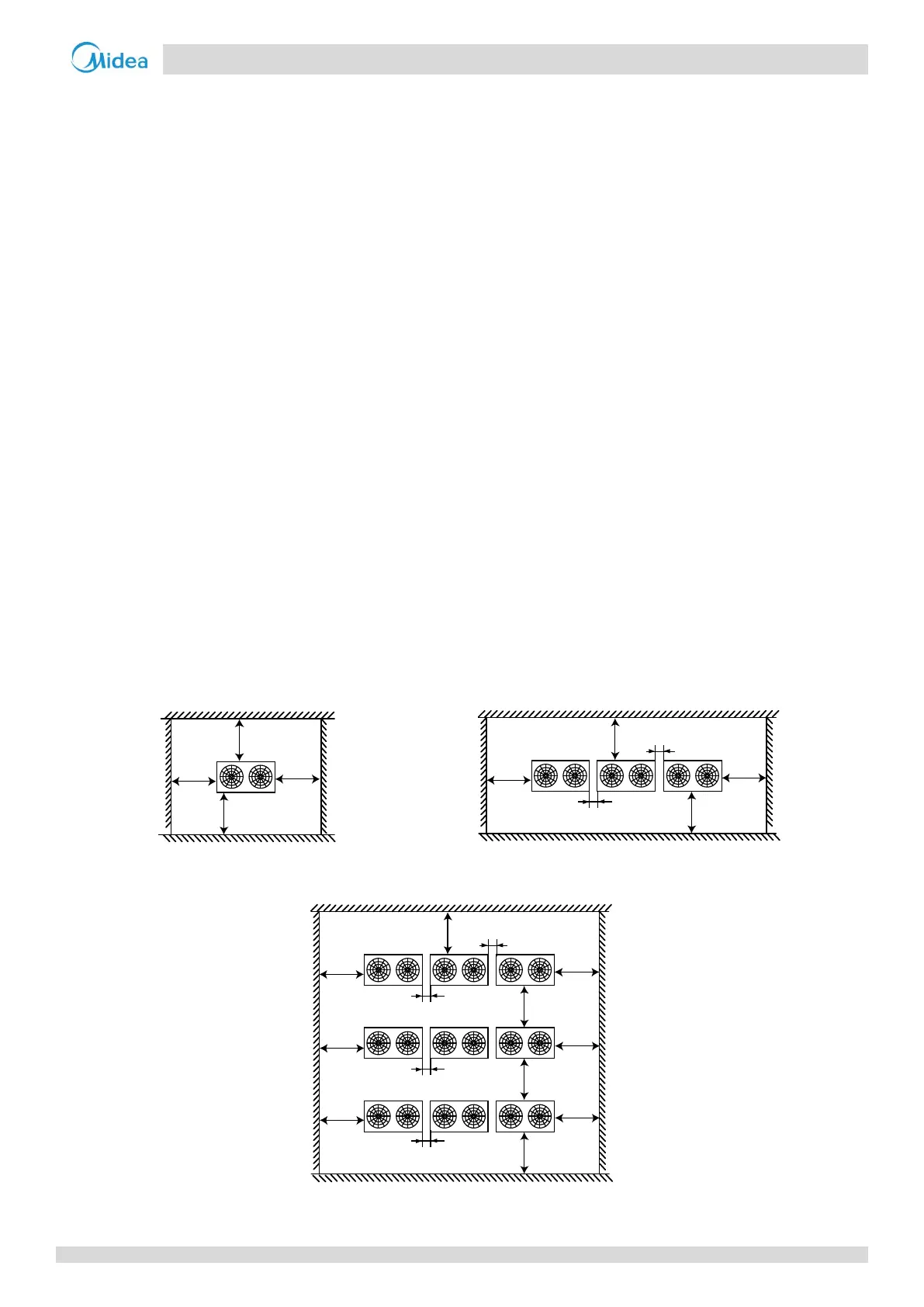VC Pro VRF 50/60Hz
143
Part 3 - System Design and Installation
2 Unit Placement and Installation
2.1 Outdoor Units
2.1.1 Placement considerations
Placement of outdoor units should take account of the following considerations:
Air conditioners should not be exposed to direct radiation from a high-temperature heat source.
Air conditioners should not be installed in positions where dust or dirt may affect heat exchangers.
Air conditioners should not be installed in locations where exposure to oil or to corrosive or harmful gases, such as
acidic or alkaline gases, may occur.
Air conditioners should not be installed in locations where exposure to salinity may occur unless the anti-corrosion
treatment for high-salinity areas customization option has been added and the precautions described in Part 3, 10
“Installation in Areas of High Salinity” are taken.
Outdoor units should be installed in well-drained, well-ventilated positions that are as close as possible to the indoor
units.
2.1.2 Spacing
Outdoor units must be spaced such that sufficient air may flow through each unit. Sufficient airflow across heat exchangers
is essential for outdoor units to function properly. Figures 3-2.1 to 3-2.3 show spacing requirements in three different
scenarios.
If the particular circumstances of an installation require a unit to be placed closer to a wall than specified in Figures 3-2.1 to
3-2.3, a discharge duct should be installed. Refer to Part 3, 3 “Outdoor Unit Ducting and Shielding”. Depending on the height
of adjacent walls relative to the height of the units, ducting may be required. Refer to Part 3, 3 “Outdoor Unit Ducting and
Shielding”.
Figure 3-2.1: Single unit installation (unit: mm)
Figure 3-2.2: Single row installation (unit: mm)
Figure 3-2.3: Multi-row installation (unit: mm)
>1000
Front
>1000
>1000
>1000
200-500
200-500
>1000
>1000
>1000
Front
>1000
200-500
200-500
200-500
200-500
>1000
>1000
>1000
>1000
>1000
>1000
Front
Front
Front
>1000
>1000
>1000
>1000

